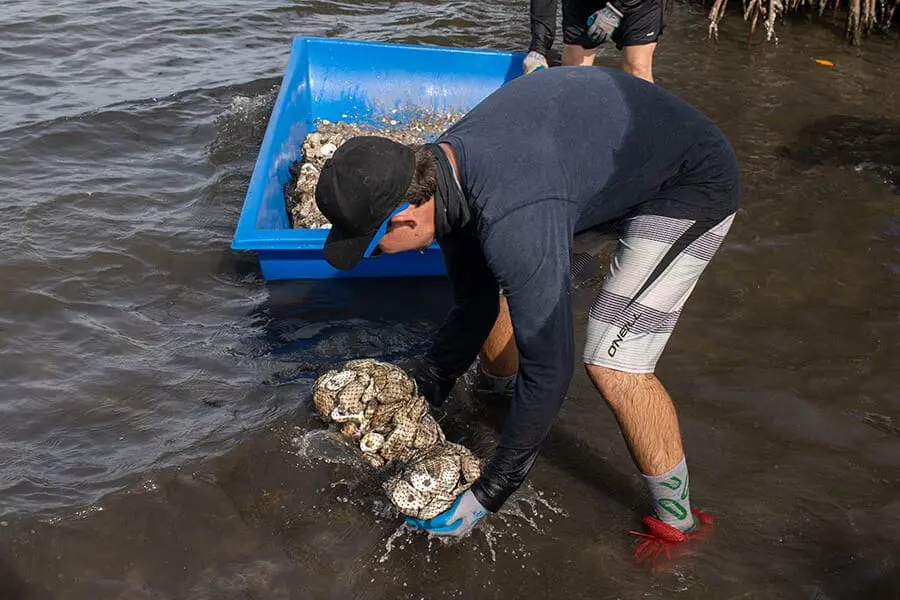

Around 17,000 live adult oysters were placed in the lagoon inside mesh bags!
Despite the uncertainty of COVID-19, one thing is for sure: nature never stops. Thanks to joint funding from the Indian River Lagoon National Estuary Program and Brevard County’s Save Our Indian River Lagoon Project Plan, our Restore Our Shores (ROS) team was recently able to complete construction on our largest living shoreline to date—all while utilizing social distancing techniques for their safety.
A living shoreline refers to the use of oyster reefs, vegetation and other organic features to improve water quality, reduce wave energy and control erosion in the lagoon. These areas also provide habitat and nesting for many native species of fish, crabs, shrimp and birds.
This conservation project, which took several weeks to complete, was built across three different conservation properties along the Indian River Lagoon in Melbourne Beach that are managed by Brevard County’s Environmentally Endangered Lands (EEL) program.
The project encompasses a whopping 965 feet of living shoreline—800 feet of which include oyster reefs. We installed over 3,700 plants representing 15 different species, including all three of our area’s native mangrove species.
Approximately 17,000 live adult oysters, which were raised by volunteers through our oyster gardening project, were added to the living shoreline in mesh bags.
The living shoreline site will be monitored by ROS and EEL staff for at least the next three years, and researchers from University of Central Florida’s Coastal and Estuarine Ecology Lab will help us keep an eye on the oysters. We will use these findings to refine installation techniques for our future projects.
If you’re interested in learning more about living shorelines or want to get involved in helping protect the Indian River Lagoon, you can volunteer for one of our Restore Our Shores projects!
